Non-Western Exhibit
Mosaic Tilework of the Zellige
If you're like me, you've definitely seen mosaic tilework before. From bathrooms to kitchens, to grand hotel lobbies and pools, these beautiful creations can be found everywhere. They are quite distinguishable as they are usually made up of different colors with elaborate geometric motifs. Have you ever wondered where this tradition came from? In this blog, we will be looking at the Zellige style which is a form of Islamic art and is also one of the main characteristics of Moroccan architecture.
The tiles are made from the best clay and are almost always hand-cut and individually shaped. Before the tiles are shaped, they are "first fabricated into glazed squares, typically 10 cm per side, then cut by hand into a variety of pre-established shapes necessary to form the overall pattern" (Parker). There are many different forms, or shapes, of the Zellige tiles including squares, octagons, stars, and more. Artists position the clay tiles into a design, or pattern, and are then inlaid in plaster. The process is obviously very time-consuming but well worth it because, in the end, these pieces are so beautiful and mesmerizing.
The Hassan II Mosque
 |
| Hassan II Mosque Casablanca, Morocco 1993 |
 |
| Hassan II Mosque Casablanca, Morocco 1993 |
The Hassan II Mosque is the largest Mosque in Morocco and the 13th largest in the world. It is definitely a sight to be seen, I mean, just look at how beautiful it is! The Mosque actually stands on a promontory looking out to the Atlantic Ocean, so worshipers can pray over the sea but unfortunately there is no glass floor looking into the sea...wouldn't that be so cool though? The Hassan II Mosque was designed by a French architect named Michel Pinseau who had lived in Morocco. The Mosque was in tribute to King Hassan II and took seven years to construct. I chose this piece because I think it is a great and grand example of the Zellige tilework and Moroccan architecture. There are so many different forms, patterns, and colors that make up this beautiful piece. I hope one day I can visit because, wow, there is just so much detail. I feel very peaceful when I look at the tiles because there are a lot of cool colors being incorporated. I can only imagine how amazing and calming it is to worship on these grounds.
Mausoleum of Mohammed V
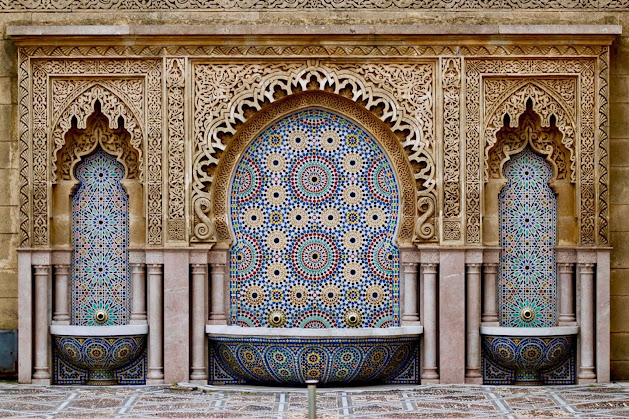 |
| Mausoleum of Mohammed V Rabat, Morocco 1971 |
 |
| Mausoleum of Mohammed V Rabat, Morocco 1971 |
Musée Dar Si Said
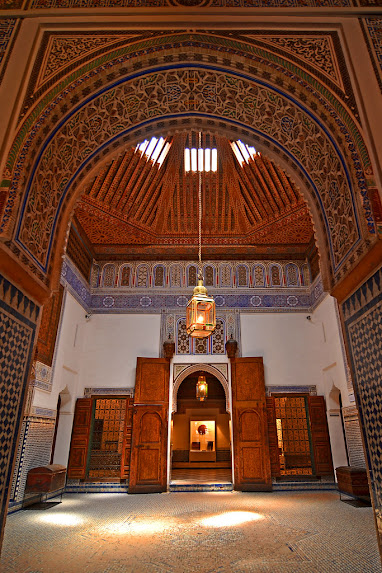 |
| Musée Dar Si Said Marrakesh, Morocco 1932 |
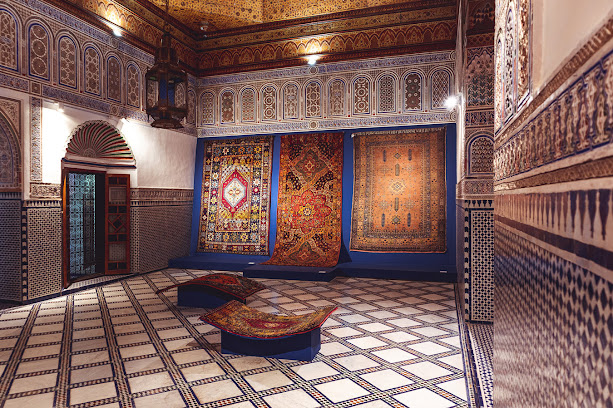 |
| Musée Dar Si Said Marrakesh, Morocco 1904 |
Moulay Ismail Mausoleum
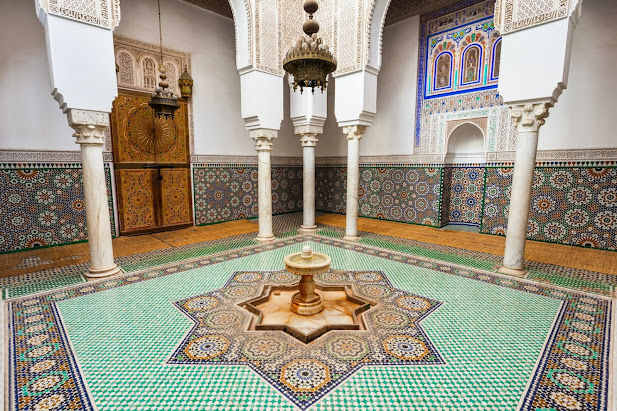 |
| Moulay Ismail Mausoleum Meknes, Morocco 1729 |
 | |
|
Zellige Tilework
As you can see, there are many different forms of Zellige tiles like circles, squares, octagons, stars, and abstract shapes. The possibilities are really endless and it's because of this that each piece is different from the rest. They may look very similar at first glance, or especially when looking at a photograph, but when you look more closely there is just so much detail. I'm sure these pictures don't do any of the architecture justice, you would definitely need to see it in person. I can't believe locals can go to the Hassan II Mosque every day for worship, that is truly so beautiful.
I chose the Zellige tilework because it is one of the main characteristics of Moroccan architecture, and I have always wanted to experience Moroccan culture. The art form dates back centuries but it is so commonly seen today and I think that says something about the quality and beauty of the motifs. Each pattern is so complex and sophisticated that it's hard to look away. I would love to watch an artist create a piece because I'm sure the whole process is very appealing or aesthetic.
Work Cited.
“Mausoleum of Moulay Ismail.” Memphis Tours, www.memphistours.com/Morocco/Morocco-Travel-Guide/Meknes-Travel-Guide/wiki/mausoleum-of-moulay-ismail.
“Mohamed V Mausoleum, Rabat.” Morocco.com, 22 Jan. 2020, www.morocco.com/attractions/mohamed-v-mausoleum/.
“Moroccan Architecture: In-Depth Review of Styles in Morocco.” Journey Beyond Travel, 13 Mar. 2016, www.journeybeyondtravel.com/morocco/architecture.
Parker, Richard Bordeaux. A Practical Guide to Islamic Monuments in Morocco. Baraka Press, 1981.

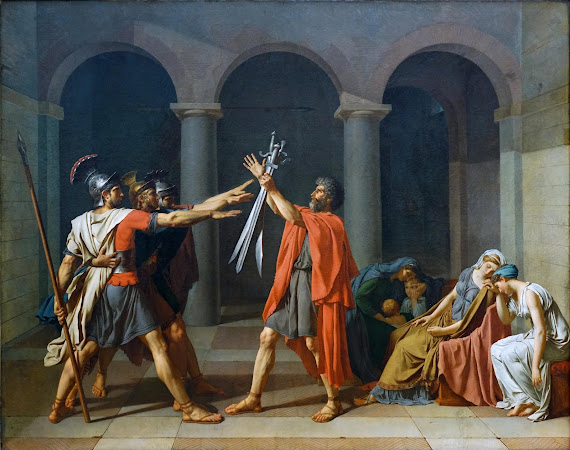
Thank you for sharing these beautiful tiles! I especially like the photos from Musée Dar Si Said. I really like the darker colors and mood, and I think the warm tones really bring out the natural lighting of the building. I also like the really bright colors and intricate patterns that are present in the Hassan II Mosque. They look like they took a lot of careful planning on behalf of the artist to ensure that the pattern ended up this beautiful.
ReplyDeleteThese are very intriguing art pieces that you have shared! Mosaic artwork remains quite oddly satisfying to my eyes. You can also always just tell that they took so much time to perfect these types of works. I like just how uniquely different the three artworks you included are from each other as far as elements of color, shape and pattern go.
ReplyDelete